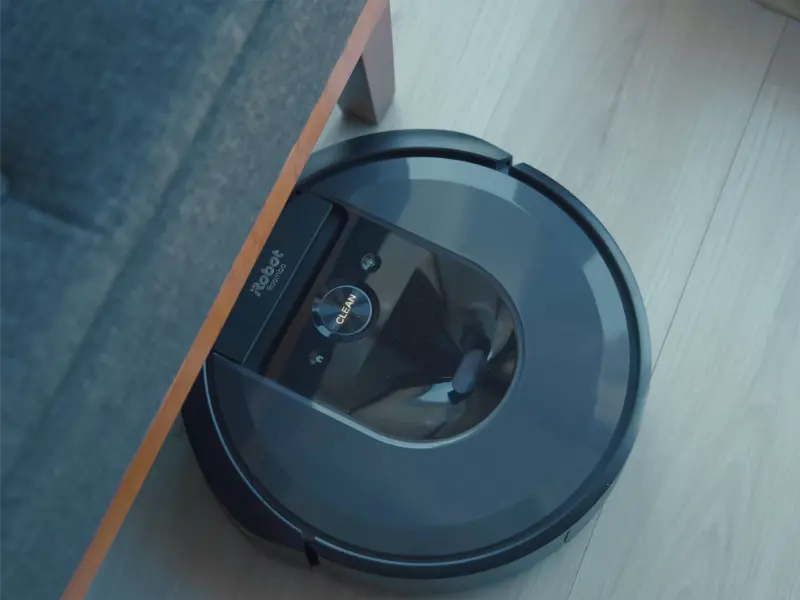- Convenience products, like the Roomba and smart thermostats, promise efficiency but pose challenges like dependency and learning hurdles.
- While offering time-saving benefits, lazy items may lead to overreliance on technology and neglect essential skills.
- The future involves advancements but requires ethical considerations, striking a balance for user empowerment and informed adoption.
The rise of ‘lazy items’ beckons us into a realm where everyday tasks transform into seamless experiences.
As we navigate this era of automated gadgets and smart solutions, the tantalizing promise of efficiency confronts us with a pressing question: are these innovations a blessing that elevates our lives or a perilous path to dependency that threatens our fundamental well-being?
Lazy items refer to products marketed as solutions to simplify and streamline everyday tasks, often catering to individuals seeking convenience and efficiency in various aspects of their lives.
As we delve into the advantages of these products, we explore the transformative impact they have on household chores and the reduction of mundane tasks, ushering in a new era of convenience and efficiency.
The pros of lazy items
Automation in household chores
In household management, robotic vacuums redefine cleaning with advanced sensors for autonomous navigation, ensuring efficiency without manual intervention. This not only ensures cleanliness but also frees up time for more meaningful pursuits, whether it’s increased productivity or moments of leisure.
Additionally, smart home devices add convenience, allowing control through voice commands or user-friendly apps. This ushers in a new era of seamless living, automating settings for enhanced comfort that effortlessly adapts to inhabitants’ preferences and needs.
Together, these innovations in automation redefine the way we approach household chores, promising not only efficiency but a lifestyle enriched by newfound convenience and comfort.
Reduction of mundane tasks
In the quest for efficiency, lazy items streamline tasks, freeing individuals from mundane responsibilities. These solutions redefine productivity by automating repetitive tasks, allowing users to redirect time to more meaningful and intellectually stimulating activities.
Moreover, the time-saving benefits extend beyond efficiency, paving the way for a lifestyle prioritizing leisure. As these items alleviate routine burdens, they create moments for personal enjoyment, fostering a healthier work-life balance. The ripple effect is reduced stress levels and an overall enhancement of well-being.
In this way, the pros of lazy items extend beyond mere convenience, ushering in a transformative shift in how we approach the allocation of our most valuable resource – time.
However, it’s crucial to balance the adoption of lazy items with an awareness of potential drawbacks.
Also read: Short videos have revolutionised the e-commerce industry, but is quality giving way to profit?

The cons of lazy items
Potential drawbacks of reliance on technology
While the integration of lazy items into our daily lives has brought about unprecedented convenience, it is not without its potential pitfalls.
One significant concern is the susceptibility to technical malfunctions. As these items heavily rely on technology, any glitches or malfunctions can disrupt their intended functionalities, leaving individuals reliant on them in a state of inconvenience.
The seamless operation of lazy items, such as automated devices or smart solutions, hinges on the stability and reliability of the underlying technology. When faced with malfunctions, users may find themselves grappling with unexpected challenges, emphasizing the need for contingency plans and manual alternatives.
Impact on individual initiative
Beyond convenience, relying on lazy items may subtly diminish individual initiative. Continuous dependency might lead to a decline in motivation for effort-demanding activities, crucial for personal growth. The constant ease provided by lazy items inadvertently hinders this vital aspect of initiative.
Moreover, there’s concern about potential erosion of problem-solving skills. Automated solutions with pre-programmed responses bypass active troubleshooting and critical thinking, diminishing individuals’ capacity to navigate challenges independently.
In the pursuit of convenience, it’s crucial to strike a delicate balance that preserves and nurtures individual initiative. While lazy items offer ease, they prompt reflection on maintaining a proactive approach to life’s endeavors.

Learning and maintenance
Some fitness trackers come with extra features like social media connectivity or games, which may be appreciated by some users but considered pointless by others, potentially diluting the primary health tracking purpose.
Similarly, smart remote controls with numerous features aim to enhance user experience, but an excess of features can make them confusing and counterproductive in simplifying the remote control experience.
For technologically challenged individuals, particularly older or less tech-savvy users, the intricate interfaces of lazy items pose barriers, potentially excluding them from enjoying the benefits of these innovations. Addressing these accessibility issues is crucial for ensuring inclusivity in the era of technological evolution.
In summary, while lazy items offer convenience, potential drawbacks include increased dependency and challenges in learning and maintenance. Striking a balance between adopting technological conveniences and preserving essential skills is crucial to mitigate these cons.
The marketing facade
In the world of lazy items, discerning between genuine solutions and clever marketing is crucial. Some products, promising to alleviate laziness, may be lured by false promises, creating a facade of convenience without addressing the core issues. Consumers play a pivotal role by engaging in critical evaluation, extending their awareness beyond marketing rhetoric.
Scrutinizing the practical implications helps distinguish items that genuinely enhance efficiency from those exploiting the desire for quick fixes. This discernment is a vital tool for navigating the market, empowering consumers to make informed choices and identify truly transformative lazy items amid the marketing mirage.
Also read: How has technology changed vampires? From bloodthirsty creatures of horror to paragons of sensuality

Successes and failures of lazy products
Roomba
A prime example of lazy innovation is the Roomba, iRobot’s robotic vacuum cleaner. This autonomous device has revolutionised home cleaning with its sophisticated sensors and navigation technology. Unlike traditional vacuums, the Roomba operates hands-free, autonomously navigating through living spaces and adapting to various floor surfaces.
The Roomba’s success lies in transforming the historically labor-intensive task of vacuuming into a seamless, automated experience. Its impact extends beyond technological prowess, manifesting in the tangible convenience it brings to users’ daily lives.
The Roomba embodies true innovation, offering a hands-free solution that genuinely enhances efficiency and convenience in home maintenance.
Smart thermostats (e.g., Nest)
In the dynamic world of home tech, smart thermostats like Nest shine in revolutionising comfort and energy efficiency. Particularly acclaimed, Nest’s innovative approach to temperature control has set a high standard.
These smart thermostats seamlessly adapt to user preferences, using machine learning and connectivity to eliminate constant manual adjustments. Nest, for instance, intuitively learns individual temperature preferences, creating a personalized and energy-efficient home climate.
Beyond convenience, smart thermostats play a pivotal role in reducing energy consumption, aligning with the growing emphasis on sustainable living. Their success underscores the seamless integration of cutting-edge technology and user-centric design, making them essential elements in modern homes synonymous with both efficiency and comfort.

Failures in overly automated kitchen appliances
In the pursuit of convenience, some kitchen tools have embraced excessive automation, attempting to simplify every facet of the cooking process. However, this ambitious approach can lead to disappointments, especially for users who prefer a hands-on cooking experience.
Kitchen appliances that are too automated:
To make life easier, some kitchen tools have become too automated, trying to make every part of cooking more accessible. However, users who like to be more hands-on might be unable to control it, which could turn the new technology from a time-saving tool into a pointless one.
Saboor Khan, a PR specialist, on behalf of Kartik Ahuja, marketing manager at Thailand Nomads
Saboor Khan, a PR specialist, on behalf of Kartik Ahuja, marketing manager at Thailand Nomads told BTW Media: “Some kitchen tools have become too automated, trying to make every part of cooking more accessible. However, users who like to be more hands-on might be unable to control it, which could turn the new technology from a time-saving tool into a pointless one.”
The potential pitfall arises when automated kitchen tools override user preferences and creativity, turning what was intended as a time-saving tool into a potentially frustrating and pointless endeavor. The essence of cooking as a personal and creative expression may be compromised when automation takes precedence over user involvement.
This serves as a reminder that in the quest for innovation and convenience, striking a balance that respects the diversity of user preferences is essential. Not every aspect of life benefits from complete automation, and the failure to acknowledge this can result in disappointments for those who value a more hands-on approach to their culinary endeavors.
Pop quiz
Which innovative device has transformed home cleaning by autonomously navigating through living spaces?
A. Smart Thermostats
B. Roomba (iRobot’s robotic vacuum cleaner)
C. Nest
D. Automated kitchen appliances
The answer is at the bottom of this article.
The future of lazy items
Technological advancements
Looking ahead, lazy items are poised for significant technological advancements, promising seamless integration into daily life. Anticipated innovations, particularly the integration of advanced artificial intelligence (AI) and machine learning, envision a future where these items surpass current capabilities.
By incorporating AI, lazy items could better understand user preferences, offering a more intuitive and responsive experience. Machine learning adds adaptability, allowing items to dynamically respond to changing user needs.
This convergence paints a future where lazy items not only offer convenience but also personalized efficiency aligned with individual lifestyles.
Ethical considerations
In the evolution of lazy items, ethical considerations are paramount. Increased interconnectivity emphasizes the importance of user privacy and data security. Developers must prioritise safeguarding user information, ensuring stringent measures for privacy and transparent data usage practices.
The potential job displacement raises ethical questions about broader societal impact, requiring a delicate balance between individual benefits and economic implications. Ethical development calls for a thoughtful approach that enhances user experience while considering employment and societal well-being.
Balancing convenience and self-sufficiency
The key to lazy item development lies in striking a delicate balance between convenience and self-sufficiency.
Future innovations should prioritise user empowerment over fostering dependency, encouraging users to see these items as tools enhancing their capabilities, not substitutes for essential skills. Initiatives focused on education and awareness are crucial, informing users about the consequences of overreliance on lazy items.
Promoting a more informed and conscientious approach to technology adoption ensures users find the right equilibrium between leveraging lazy item convenience and preserving innate self-sufficiency.

Harmony in integration: Navigating the dual nature of lazy items
In summary, the exploration of lazy items reveals a dual nature.
On the positive side, these items bring forth time-saving benefits, heightened efficiency, and increased convenience across various facets of life.
However, a closer examination also unveils potential drawbacks, including an upsurge in dependency, the pitfalls of excessive reliance on technology, and the looming risk of neglecting crucial skills and self-sufficiency.
This nuanced understanding underscores the importance of a balanced approach to the integration of lazy items into our daily routines.
Transitioning to the individual’s role, users wield the responsibility of adopting lazy items with consciousness. This involves being vigilant about potential drawbacks and exercising critical judgment in navigating evolving technological landscapes. By recognizing technology as a tool, not a crutch, users can enhance essential human skills and qualities, emphasizing thoughtful integration.
Moving forward, the emphasis is on cultivating a balanced approach in integrating lazy items into daily life. Prioritizing overall well-being and fulfillment guides this endeavor, with lazy items serving as valuable tools that complement, not substitute, personal engagement and self-sufficiency. This ensures technology enhances experiences without overshadowing the intrinsic human elements essential to well-being.
The correct answer to the pop quiz is B. Roomba (iRobot’s robotic vacuum cleaner)

